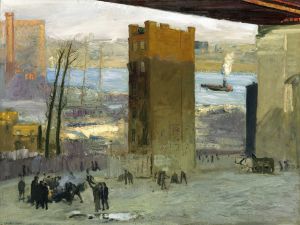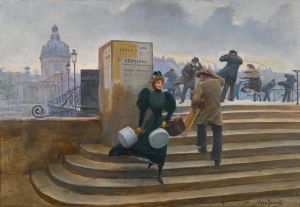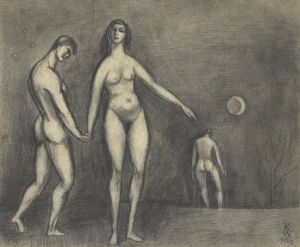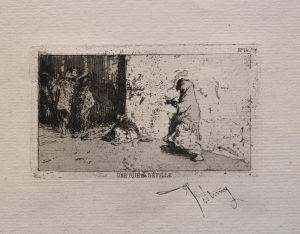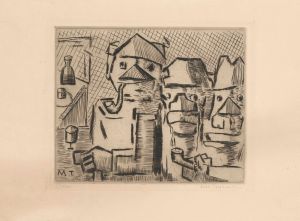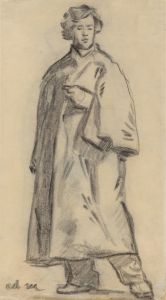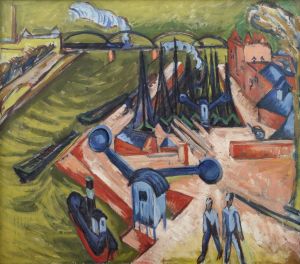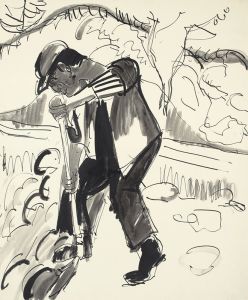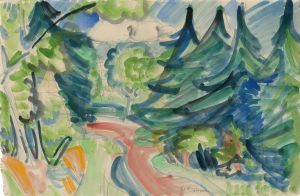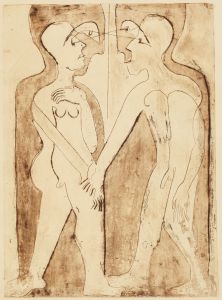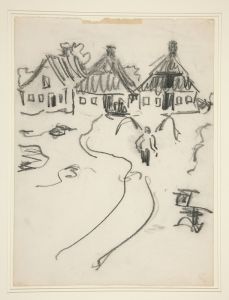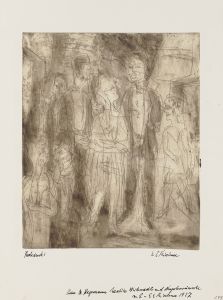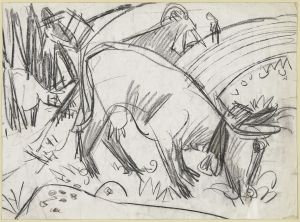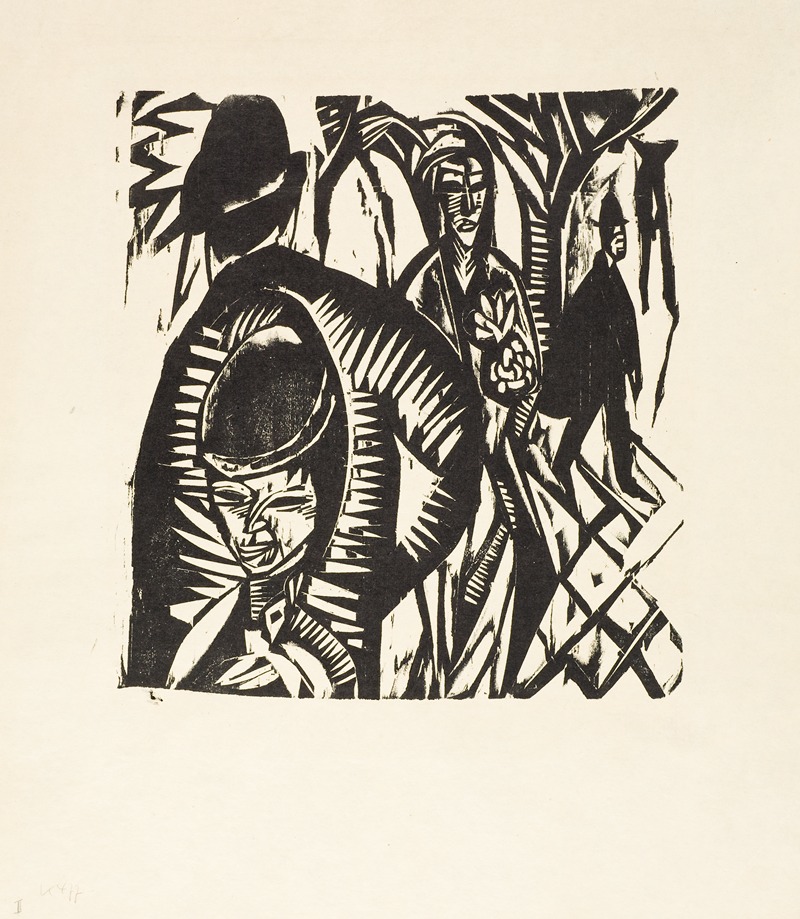
Street Scene after a Shower
A hand-painted replica of Ernst Ludwig Kirchner’s masterpiece Street Scene after a Shower, meticulously crafted by professional artists to capture the true essence of the original. Each piece is created with museum-quality canvas and rare mineral pigments, carefully painted by experienced artists with delicate brushstrokes and rich, layered colors to perfectly recreate the texture of the original artwork. Unlike machine-printed reproductions, this hand-painted version brings the painting to life, infused with the artist’s emotions and skill in every stroke. Whether for personal collection or home decoration, it instantly elevates the artistic atmosphere of any space.
"Street Scene after a Shower" is a painting by the German expressionist artist Ernst Ludwig Kirchner, a leading figure in the early 20th-century art movement known as Die Brücke (The Bridge). Kirchner, born in 1880 in Aschaffenburg, Germany, was instrumental in the development of expressionism, a movement characterized by its emphasis on representing emotional experiences rather than physical reality.
This particular painting, "Street Scene after a Shower," is part of Kirchner's renowned series of street scenes created during his time in Berlin. Kirchner moved to Berlin in 1911, and the bustling urban environment became a significant source of inspiration for his work. The street scenes he painted during this period are notable for their dynamic compositions and vivid use of color, reflecting the energy and complexity of city life.
In "Street Scene after a Shower," Kirchner captures the aftermath of a rain shower on a busy Berlin street. The painting is characterized by its bold, angular forms and the use of vibrant colors, which are typical of Kirchner's style. The wet pavement reflects the figures and buildings, creating a sense of movement and fluidity. Kirchner's use of perspective and distortion adds to the dynamic quality of the scene, drawing the viewer into the bustling urban environment.
Kirchner's street scenes often depict the modern city as a place of both excitement and alienation. The figures in "Street Scene after a Shower" are elongated and stylized, emphasizing their anonymity and the transient nature of urban life. This portrayal reflects Kirchner's interest in the psychological impact of modernity and the changing social dynamics of the early 20th century.
The painting also demonstrates Kirchner's mastery of color and form. His use of bold, contrasting colors creates a sense of vibrancy and immediacy, while the angular lines and distorted forms convey a sense of tension and unease. This combination of elements is a hallmark of Kirchner's expressionist style, which sought to convey the emotional and psychological realities of the modern world.
Kirchner's work, including "Street Scene after a Shower," was influenced by various artistic movements and styles. He drew inspiration from the Fauves, a group of early 20th-century modern artists known for their bold use of color, as well as from non-Western art forms, which he encountered through ethnographic museums and collections. These influences are evident in his innovative approach to composition and color.
Throughout his career, Kirchner faced numerous challenges, including the impact of World War I and the rise of the Nazi regime, which labeled his work as "degenerate art." Despite these obstacles, Kirchner's contributions to modern art have been widely recognized, and his work continues to be celebrated for its bold expression and innovative style.
"Street Scene after a Shower" exemplifies Kirchner's ability to capture the essence of urban life through his unique expressionist lens. The painting remains an important work within his oeuvre and a significant example of early 20th-century expressionism.





